Ancient Egyptians Played Bowling 5,000 Years Ago
A. Sutherland - AncientPages.com - Bowling can be traced to ancient Egypt. It was a popular game practiced in ancient Egypt about 5,000 years ago. Ancient Egyptians played a game in a large hall that was a cross between bowling and lawn balls. However, two people played at once, one at either end of a 4 meter long lane.
In the 1930's a British anthropologist, Sir Flinders Petrie, discovered all sorts of primitive bowling balls, bowling pins and other materials in the grave of an Egyptian boy from 3200 BC. It appears that the ancient Egyptians played a primitive form of bowling and that bowling is more than 5200 years old.
More recently, Professor Edda Bresciani, an Egyptologist at the University of Pisa and his team found evidence of an ancient Egyptian game that was a mixture of bowling, billiards and lawn bowls and was played at Narmoutheos, in the Fayoum region, some 90 kilometers south of Cairo. It was played in a spacious room that seems to be the prototype of a modern bowling hall.
The room was part of a structure, perhaps a residential building, which dated from the Roman period, specifically between the 2nd and 3rd century AD. Inside the room was a lane and two stone balls. The lane was about 4 metres long, 20 centimetres wide and 10 centimetres deep. And there was a 10 centrimetre square opening at its centre. the balls had different diameters; one fitted exactly the square opening, the other could run smoothly along the lane.

Ancient Egyptians played a bowls-like game as far back as 7200 BC, which spread across the Mediterranean,
evolving into Bocce in Italy, Petanque in France./Musée de la Boule/ Bowls Queensland
Ancient Egyptians played a bowls-like game as far back as 7200 BC, which spread across the Mediterranean,
evolving into Bocce in Italy, Petanque in France./Musée de la Boule/ Bowls Queensland
Bresciani says the game was played by two players positioned at the two ends of the lane. One would throw the smaller ball, the other the bigger one.
"They would throw the balls at the same time. Most likely, the bigger ball was thrown along the lane to prevent the smaller ball from entering the hole at the centre," Professor Edda Bresciani, said.
In France and Spain it is played with wooden or stone balls and is called 'boule' or 'petanque'.
It was introduced to Great Britain with the Norman Conquest, where its name loosely translated as 'throwing the stone'. Image via Bowls Queensland
"When this happened, the smaller ball could be easily recovered from the sand-filled terracotta vase below."
Each player took it in turns to throw the smaller ball, which determined the winner of the game. The winner was the player who was able to place the ball into the hole more times. Modern bowling is claimed to have roots in Germany around 300 A.D.

Bowling in Middle Ages. Philippe V and Charles V prohibit bowling games . Image credit: source
This is most likely where today’s pins were introduced. Parishioners were instructed to place their kegels, (a pin-resembling item that most Germans carried for protection and sport), at the end of a long lane. They then had to roll a rock at the kegel. If they knocked the kegel over, their sins were absolved. Martin Luther was an avid bowler, and set up a couple of lanes in his back yard so that he and his children could enjoy it as a sport.
Bowling was started in England in the early 1100’s. By the 1300’s there were several variations such as half-bowls, skittles, and ninepins. During the reign of King Henry VIII the game gained popularity and was played as a symbol of nobility and social status.
Written by – A. Sutherland - AncientPages.com Senior Staff Writer
Copyright © AncientPages.com All rights reserved. This material may not be published, broadcast, rewritten or redistributed in whole or part without the express written permission of AncientPages.com
Expand for referencesMore From Ancient Pages
-
 Cahuachi – Complex Of Truncated Adobe Pyramids In Peru’s Desert
Civilizations | Aug 27, 2015
Cahuachi – Complex Of Truncated Adobe Pyramids In Peru’s Desert
Civilizations | Aug 27, 2015 -
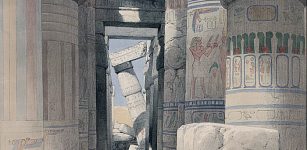 Karnak: One Of Largest Temple Complexes In The World And Its Spectacular View
Civilizations | Sep 5, 2015
Karnak: One Of Largest Temple Complexes In The World And Its Spectacular View
Civilizations | Sep 5, 2015 -
 Unusual Neolithic Burial From Grotta Di Pietra Sant’ Angelo Puzzles Archaeologists
Featured Stories | Jan 15, 2024
Unusual Neolithic Burial From Grotta Di Pietra Sant’ Angelo Puzzles Archaeologists
Featured Stories | Jan 15, 2024 -
 Ancient Mysteries Of Japan – Remarkable Story Of An Unknown Civilization And Lost Knowledge – Part 2
Civilizations | Sep 2, 2019
Ancient Mysteries Of Japan – Remarkable Story Of An Unknown Civilization And Lost Knowledge – Part 2
Civilizations | Sep 2, 2019 -
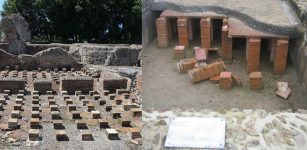 Hypocaust – First Central Heating Invented By Ancient Romans 2,000 Years Ago
Ancient History Facts | Jan 14, 2018
Hypocaust – First Central Heating Invented By Ancient Romans 2,000 Years Ago
Ancient History Facts | Jan 14, 2018 -
 Evidence Of A Hybrid Population Of Neanderthals And Modern Humans Discovered At La Cotte De St Brelade
Archaeology | Feb 9, 2021
Evidence Of A Hybrid Population Of Neanderthals And Modern Humans Discovered At La Cotte De St Brelade
Archaeology | Feb 9, 2021 -
 DNA Says You’re Related To A Viking, A Medieval German Jew Or A 1700s Enslaved African? What A Genetic Match Really Means
DNA | Jun 7, 2024
DNA Says You’re Related To A Viking, A Medieval German Jew Or A 1700s Enslaved African? What A Genetic Match Really Means
DNA | Jun 7, 2024 -
 Fascinating Portable Art From Torre Cave, Gipuzkoa – One Of The Most Complete Specimens From The Entire Iberian Peninsula
Archaeology | May 26, 2023
Fascinating Portable Art From Torre Cave, Gipuzkoa – One Of The Most Complete Specimens From The Entire Iberian Peninsula
Archaeology | May 26, 2023 -
 Secrets Of The Japanese Shirasaya Sword Mounting
Featured Stories | Sep 11, 2018
Secrets Of The Japanese Shirasaya Sword Mounting
Featured Stories | Sep 11, 2018 -
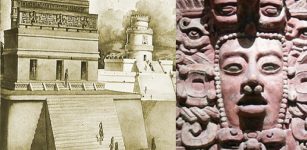 Ancient Maya Drug Containers – Scientists Identified What’s Inside
Archaeology | Jan 16, 2021
Ancient Maya Drug Containers – Scientists Identified What’s Inside
Archaeology | Jan 16, 2021 -
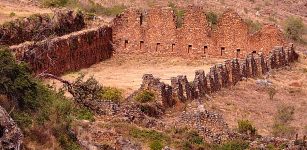 Inca Llajta: Largest And Most Impressive Inca Complex In Bolivia
Civilizations | Dec 6, 2018
Inca Llajta: Largest And Most Impressive Inca Complex In Bolivia
Civilizations | Dec 6, 2018 -
 Valley Temple At Giza: Great Masterwork Testifies To Remarkable Engineering Skills Of Megalith Builders
Ancient Technology | Jun 9, 2017
Valley Temple At Giza: Great Masterwork Testifies To Remarkable Engineering Skills Of Megalith Builders
Ancient Technology | Jun 9, 2017 -
 Stunning Reconstructions Shows What Colchester Looked Like During Roman Times
News | Jul 2, 2022
Stunning Reconstructions Shows What Colchester Looked Like During Roman Times
News | Jul 2, 2022 -
 Draupnir: God Odin’s Magical Ring That Could Multiply Itself
Featured Stories | Jul 26, 2017
Draupnir: God Odin’s Magical Ring That Could Multiply Itself
Featured Stories | Jul 26, 2017 -
 Young Boy Finds Baffling Artifacts In New Mexico Predating The Anasazi, The ‘Ancient Ones’
Featured Stories | Aug 6, 2024
Young Boy Finds Baffling Artifacts In New Mexico Predating The Anasazi, The ‘Ancient Ones’
Featured Stories | Aug 6, 2024 -
 Easter Island May Offer Proof Of An Alien Apocalypse
Archaeology | Jun 7, 2018
Easter Island May Offer Proof Of An Alien Apocalypse
Archaeology | Jun 7, 2018 -
 Vindelev Treasure Re-Writes Ancient History – World’s Oldest Runic Inscription Of God Odin Found On Ancient Gold Pendants
Archaeology | Mar 8, 2023
Vindelev Treasure Re-Writes Ancient History – World’s Oldest Runic Inscription Of God Odin Found On Ancient Gold Pendants
Archaeology | Mar 8, 2023 -
 On This Day In History: Casanova – Famous Seducer And Adventurer Dies In A Castle In Bohemia – On June 4, 1798
News | Jun 4, 2016
On This Day In History: Casanova – Famous Seducer And Adventurer Dies In A Castle In Bohemia – On June 4, 1798
News | Jun 4, 2016 -
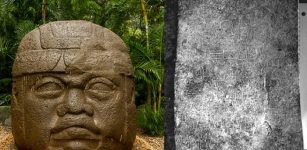 Mystery Of The Controversial Cascajal Block – Oldest Writing In The Americas
Artifacts | Oct 12, 2017
Mystery Of The Controversial Cascajal Block – Oldest Writing In The Americas
Artifacts | Oct 12, 2017 -
 Arachne – Spider Woman Who Challenged Goddess Athena And Was Punished
Featured Stories | Dec 5, 2018
Arachne – Spider Woman Who Challenged Goddess Athena And Was Punished
Featured Stories | Dec 5, 2018


